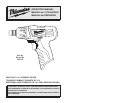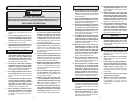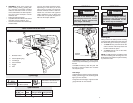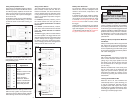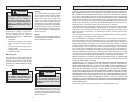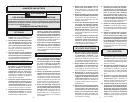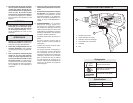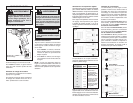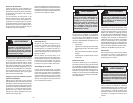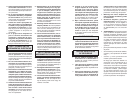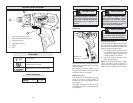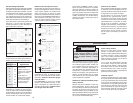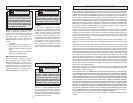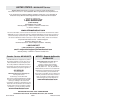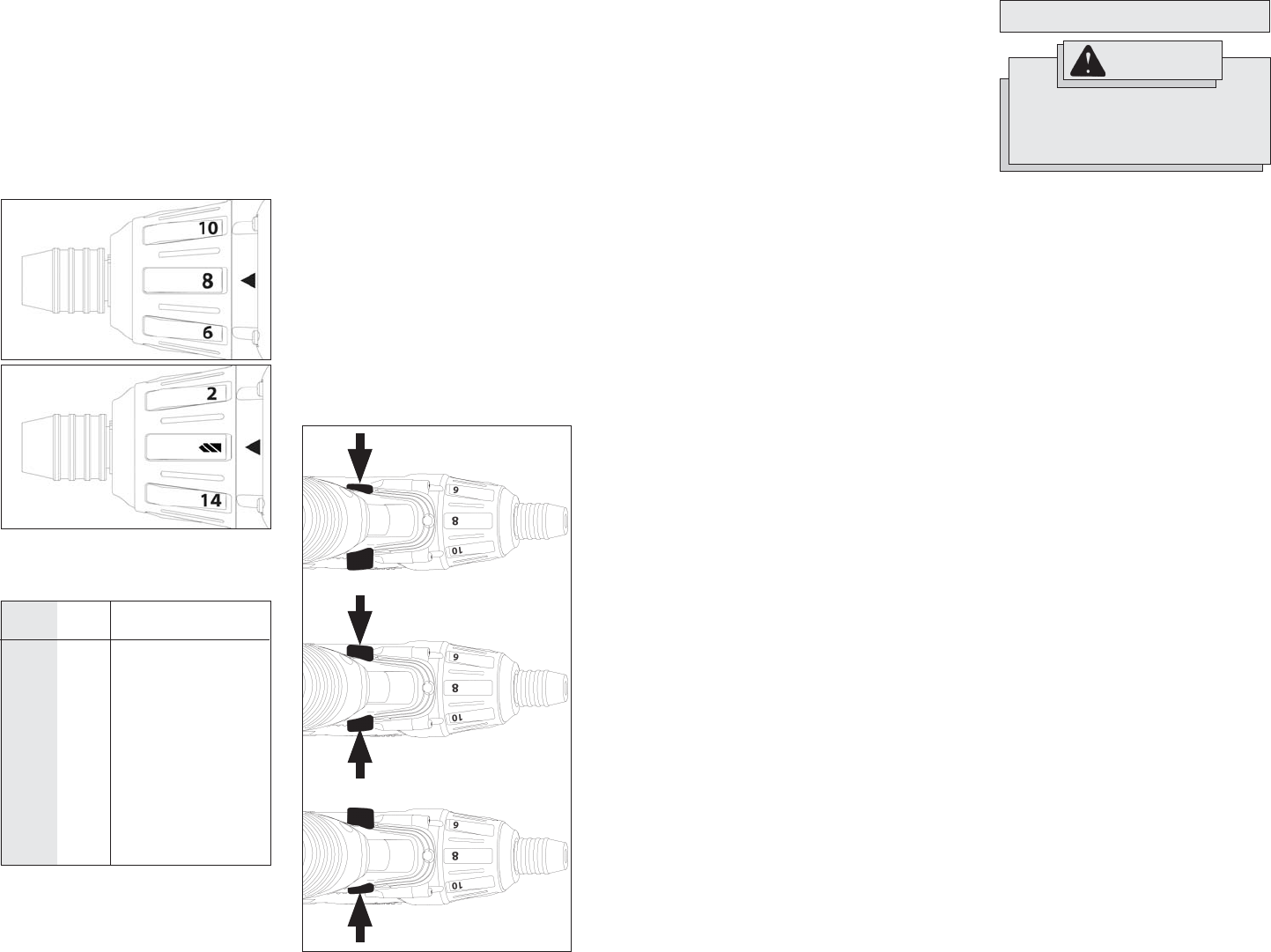
6 7
The torque specifi cations shown here are
approximate values obtained with a fully
charged battery pack.
NOTE: Because the settings shown in the
table are only a guide, use a piece of scrap
material to test the different clutch settings
before driving screws into the workpiece.
Fig. 2
in. lbs.
4
7
10
13
16
19
41
120
Clutch
Setting
2
4
6
8
10
12
14
Drill
Applications
Small screws in soft-
wood.
Medium screws in soft-
wood or small screws
in hardwood.
Large screws in
softwoods. Medium
screws in hardwood or
large screws in hard-
wood with pilot hole.
Using the Adjustable Clutch
This tool has an adjustable clutch for driving
different types of screws into different materi-
als. When properly adjusted, the clutch will
slip at a preset torque to prevent driving the
screw too deep and to prevent damage to
the screw or tool.
To adjust the clutch, turn the clutch adjusting
ring so that the desired setting (1-15) lines
up with the arrow on the motor housing, as
shown.
Fig. 3
Driving
Drilling
APPLICATIONS
To reduce the risk of electric shock,
check work area for hidden pipes
and wires before drilling or driving
screws.
WARNING
This tool provides a quick, convenient
means of drilling small holes and installing
and removing screws. Because of the many
screw sizes, types, thread engagements and
materials available, it is diffi cult to limit the ap-
plication of this tool by screw size. However,
for applications in wood, a #6 wood screw
with a full pilot hole is recommended as a
practical limit.
Drilling in Wood, Composition Materials
and Plastic
Always use sharp bits. When using twist drill
bits, pull the bit out of the hole frequently to
clear chips from the bit fl utes. To reduce the
chance of splintering, back work with a piece
of scrap wood. Select low speeds for plastics
with a low melting point.
Driving Screws
Drill a pilot hole when driving screws into
thick or hard materials. Set the clutch ad-
justing ring to the proper position and set
the speed to low. Use the proper style and
size screwdriver bit for the type of screw
you are using.
With the screwdriver bit in the screw, place
the tip of the screw on the workpiece and
apply firm pressure before pressing the
foward/reverse switch up. Screws can be
removed by pressing the foward/reverse
switch down.
Locking the Screwdriver Bit
When the tool is off, the screwdriver bit
automatically locks in place allowing you
to use the screwdriver manually. Do this
to tighten screws that require more torque
than the driver is capable of delivering, when
confi rming the tightness of a screw or when
loosening an extremely tight screw.
Battery Pack Protection
To protect the battery from damage and
extend its life, the tool's intelligent circuit
monitors current draw, temperature, and
voltage drops.
In extremely high torque, binding, stalling,
and short circuit situations that cause high
current draw, the tool will vibrate for about
5 seconds,
the fuel gauge will fl ash, and
then the tool will turn OFF. To reset, release
the trigger.
Under extreme circumstances, the internal
temperature of the battery could become too
high. If this happens, the fuel gauge will fl ash
and the battery pack will shut off. Let the bat-
tery pack cool and then continue work.
Using Control Switch
The control switch may be set to three posi-
tions: forward, reverse and lock. Due to a
lockout mechanism, the control switch can
only be adjusted when the ON/OFF switch
is not pressed. Always allow the motor to
come to a complete stop before using the
control switch.
For forward (clockwise) rotation, push in
the control switch from the right side of
the tool. Check the direction of rotation
before use.
For reverse (counterclockwise) rotation,
push in the control switch from the left side
of the tool. Check direction of rotation
before use.
To lock the trigger, push the control switch to
the center position. The trigger will not work
while the control switch is in the center locked
position. Always lock the trigger or remove
the battery pack before performing mainte-
nance, changing accessories, storing the tool
and any time the tool is not in use.
Forward -
Push from RIGHT
Lock -
Push to CENTER
Reverse -
Push from LEFT
Fig. 4



